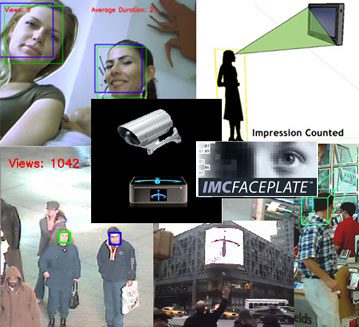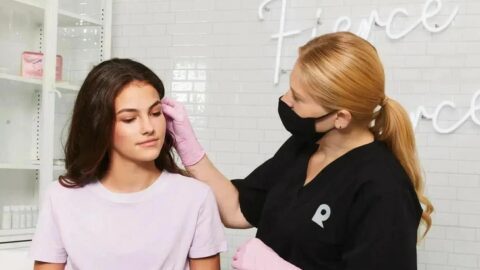A concept that has been around since the late 1880s, eye tracking has been used for medical research, cognitive studies, and computer usability. A natural for the retail industry, gaze tracking found its way into commercial applications less than 10 years ago.
Since then, it has primarily been used on the Web to track user interaction between clicks.
Now brick-and-mortar retailers are quietly testing different types of gaze tracking technologies, which is keeping some of their lawyers up at night with privacy concerns. “People are very quiet about who’s testing what,” says Laura Davis-Taylor, founder and principal of Retail Media Consulting and author of Lighting up The Aisles. “No one quite knows what the privacy backlash is going to be yet and people are trying to test out the technology before they risk it or get married to it.”
If the retail industry can get over the privacy hurdle, gaze tracking technology can be extremely valuable, according to industry analysts. “One of the interesting pieces of information gathered is whether consumers are scanning shelves to find an item and when it is located, they pick it up and move on,” says Camille Schuster, president of Global Collaborations, Inc. “That is very different behavior from the consumer who is scanning the shelves but takes time to read labels or check prices before choosing which item. Knowing how many consumers are loyal to a brand and who is scanning the shelf to find that item is important.”
Advertisement
The Privacy Hurdle
A solution designed to capture shoppers’ activity, gaze tracking brings the privacy issue to the forefront. “Even using it in a very benign manner, where retailers are not holding onto the video and they’re only turning results as data, most of our retail clients have their legal departments very fearful about this,” Davis-Taylor says.
“Although retailers generally display signage to let consumers know cameras are in place, many consumers may not be aware of the exact purpose. “Since specific information is being gathered about consumers’ behavior, they should be informed of the activity — at least in a general way,” says Schuster. “If consumers are not informed, but find out later that their gaze process was being monitored, they are likely to feel violated and react negatively to the retail outlet in which monitoring was conducted.”
In addition to privacy concerns, the price of the solutions may deter some retailers. “A lot of these vendors coming out with technology are pricing it too high,” says Davis-Taylor. “We advise these companies to get these technologies down to a price that can get it in every store, so that they’re getting mass penetration and every single touch point has some type of validation. It’s like the Web — it’s very accountable, and people are willing to spend more money to get really deep shopper insights in real time. Most importantly, they can respond according to what does and does not work.”
Eye-Catching Vendors
Several key players in gaze tracking technology are putting forth solutions to meet the needs of the retail industry:
New York City-based media company Studio IMC is the proponent of facePLATE, software that is designed to track faces and advertising impressions. The patent-pending technology sends reports with the number of impressions and the length of each.
TruMedia’s iCapture software is designed to detect and track viewers to generate true viewing data for digital displays and screens by analyzing face images of people watching. It reports data on total viewer count, average attention span, total male and female exposure, and report time frame.
Ontario-based Xuuk created Eyebox2, which is designed to record the number of viewers of an advertisement in real time. Eyebox2 allows advertisers to choose where ads should be placed, such as locations where the number of lookers is guaranteed. The digital camera-like device pulsates infrared light flashes invisible to the naked eye, designed to create the infrared equivalent of “red eye.” The number and time of red-eye exposures are recorded, picking up eyes of anyone within 10 meters. The Eyebox2 sells for $999.









